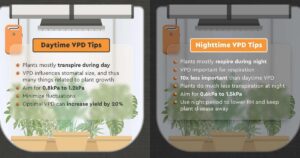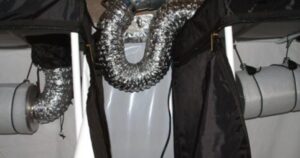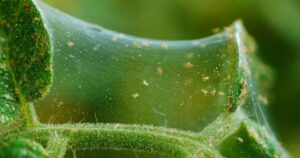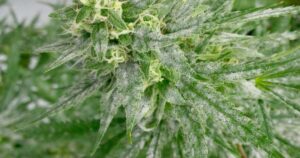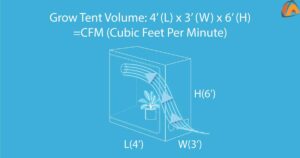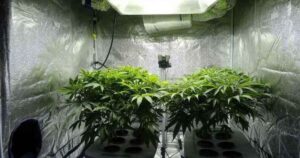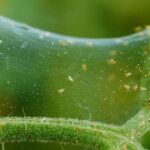After battling a spider mite infestation in your grow tent, the process of “Clean Grow Tent After Spider Mites” refers to the necessary steps and precautions taken to thoroughly sanitize and restore the grow tent environment. This involves eliminating any traces of spider mites, their eggs, and webbing, ensuring a pest-free space for your plants to thrive.
How To Clean Grow Tent After Spider Mites? Discover effective methods and practical tips to reclaim your grow tent from the aftermath of a spider mite invasion. From sanitizing surfaces to preventing future infestations, this guide empowers you with actionable steps.
In the quest to maintain a healthy and pest-free environment for your plants, cleaning your grow tent after a spider mite infestation is crucial. Gain insights into effective cleaning agents, equipment maintenance, and proactive strategies to ensure a resilient and thriving cultivation space.
Essential Tools for Post-Spider Mites Grow Tent Cleanup
Maintaining a healthy indoor garden is a rewarding endeavor, but dealing with pesky spider mites can be a challenge. When it comes to cleaning up your grow tent after a spider mite infestation, having the right tools is crucial. First on the list is a reliable vacuum cleaner with a nozzle attachment to effectively remove any lingering mites and webs.
A soft brush or a microfiber cloth is handy for wiping down surfaces without causing damage to your plants. Invest in a quality insecticidal soap or neem oil spray to treat and protect your plants from any remaining pests. For a quick reference, here’s a table summarizing the essential tools:
| Essential Tools | Purpose |
|---|---|
| Vacuum Cleaner with Nozzle | Efficiently removes mites and webs. |
| Soft Brush or Microfiber Cloth | Safely wipes down surfaces without damage. |
| Insecticidal Soap or Neem Oil Spray | Treats and protects plants from remaining pests. |
| Pruning Shears | Trims away damaged foliage for new growth. |
| Disposable Gloves | Keeps hands protected during cleanup. |
This toolkit will help you restore your grow tent to a pest-free haven for your plants, ensuring a thriving indoor garden.
Step-by-Step Guide for Thorough Spider Mite Removal in Grow Tents
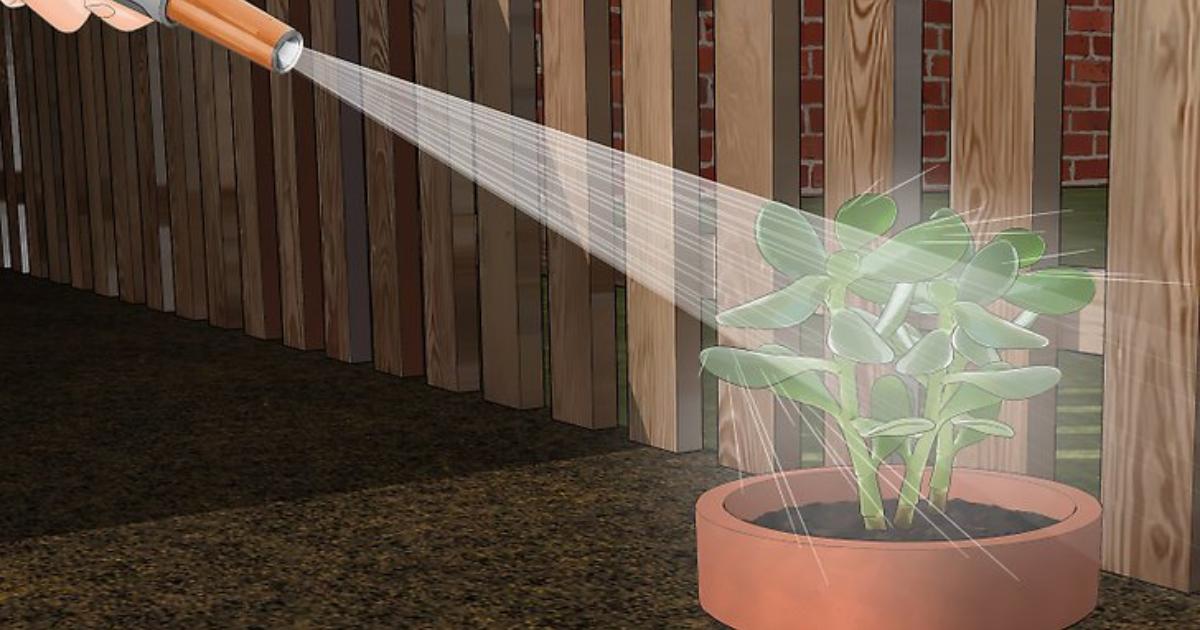
In your pursuit of a thriving indoor garden, dealing with spider mites can be a pesky challenge. Fear not! This step-by-step guide is your trusted companion for a thorough spider mite removal mission within your grow tent. First and foremost, equip yourself with essential tools like a magnifying glass and neem oil. Begin by inspecting your plants meticulously, identifying any signs of mites such as tiny webs or discolored spots.
Once spotted, isolate the affected plants to prevent the mites from spreading. Gently hose down your plants to dislodge the mites, and then apply a neem oil solution to suffocate and deter them. Regularly monitor and repeat the process until your green companions are mite-free. Remember, a vigilant eye and proactive measures are your allies in this mission!
Choosing Effective Cleaning Agents for Spider Mite Residue
When it comes to dealing with the aftermath of a spider mite infestation, selecting the right cleaning agents is crucial for a successful cleanup. These tiny pests can leave behind sticky residues on various surfaces, posing a challenge for removal. To effectively tackle spider mite residue, consider choosing cleaning agents that are not only powerful but also safe for your surroundings.
Look for options with natural ingredients or eco-friendly formulations to minimize environmental impact. Additionally, ensure that the selected cleaning agents are suitable for the surfaces affected, whether it’s plant leaves, furniture, or household items. A careful evaluation of the cleaning products available can make the cleanup process more efficient and contribute to a healthier living environment.
| Cleaning Agents | Key Features |
|---|---|
| Natural Formulations | Eco-friendly and safe for the environment. |
| Surface Compatibility | Suitable for various surfaces affected by spider mite residue. |
| Effectiveness | Powerful cleaning properties for efficient residue removal. |
Preventive Measures to Avoid Future Spider Mite Infestations
Practicing good garden hygiene by cleaning tools and disposing of infested plant material can break the spider mite’s life cycle. An easy-to-follow preventive routine ensures the well-being of your plants and keeps spider mites from making an unwelcome appearance in the future.
Preventive Measures for Spider Mite Infestations:
| Key Points | Description |
|---|---|
| Regular Inspection | Inspect plants for early signs of infestation, such as discoloration and fine webbing. |
| Plant Hygiene | Remove dead or diseased foliage promptly to eliminate potential breeding grounds for spider mites. |
| Natural Predators | Introduce beneficial insects like ladybugs or predatory mites to control the spider mite population. |
| Adequate Watering | Maintain consistent moisture to create an environment less favorable for spider mites. |
| Natural Sprays | Use preventive measures such as neem oil or insecticidal soap to deter spider mites. |
Proper Disposal of Contaminated Materials in Grow Tent Cleaning

In the pursuit of maintaining a healthy and productive indoor garden, it is crucial to understand the proper disposal of contaminated materials during the cleaning of your grow tent after Hermie and spider mites . When dealing with potentially harmful substances like pesticides or fertilizers, follow local guidelines for hazardous waste disposal. Implementing a responsible waste management strategy not only safeguards the environment but also contributes to the sustainability of your gardening practices.
Key Points: Proper Disposal of Contaminated Materials in Grow Tent Cleaning
| Aspect | Guidelines |
|---|---|
| Organic Waste | Compost spent soil and plant matter to promote sustainability in gardening practices. |
| Non-Organic Waste | Recycle plastic containers and other non-organic materials to minimize environmental impact. |
| Hazardous Substances | Adhere to local guidelines for the disposal of hazardous substances like pesticides and fertilizers. |
| Designated Disposal System | Set up a waste management system within your gardening space to efficiently separate and dispose of different types of waste. |
| Environmental Responsibility | Prioritize eco-friendly practices to contribute to a healthier environment and sustainable gardening. |
Regular Maintenance Tips for a Spider Mite-Free Grow Environment
Maintaining a spider mite-free grow environment is essential for the health of your plants. These tiny pests can wreak havoc on your garden, causing irreversible damage if left unchecked. To keep your plants thriving, adopt a proactive approach to regular maintenance. Start by inspecting your plants frequently, paying close attention to the undersides of leaves where spider mites often hide.
Introduce natural predators like ladybugs, which can help control mite populations. Ensure proper ventilation and maintain optimal humidity levels, as spider mites thrive in dry conditions. Regularly clean your gardening tools and equipment to prevent the spread of mites. If an infestation is detected, isolate affected plants promptly to avoid further contamination. This proactive maintenance routine will not only protect your plants but also promote a healthier and more robust growing environment.

